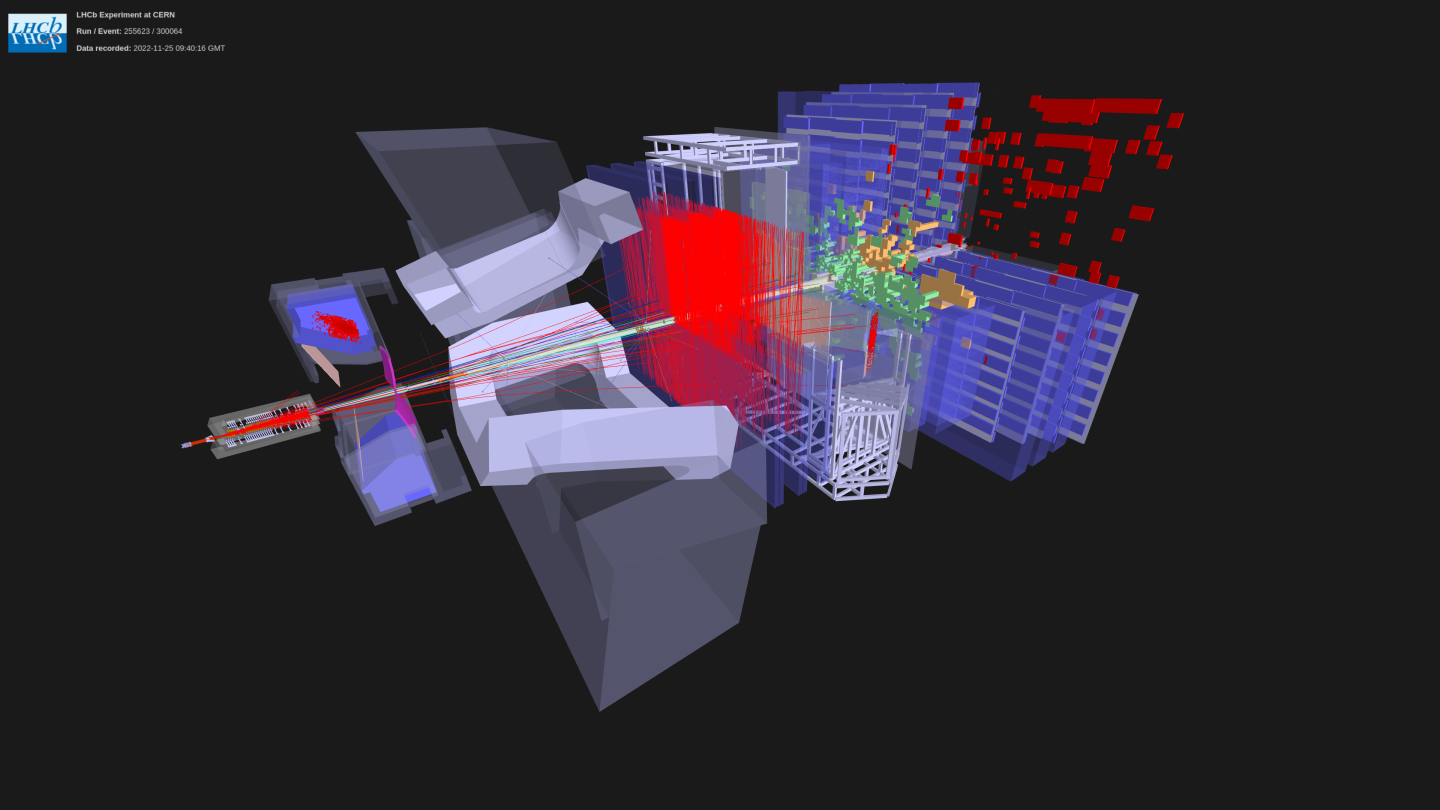
NCBJ researchers have obtained new constraints on CPT symmetry breaking in the charm quark sector
20-09-2024
The Standard Model describes the fundamental interactions between elementary particles and is one of the best experimentally tested theories of particle physics. However, we know that it is incomplete because it does not describe, for example, the gravitational interaction. Therefore, scientists are constructing interaction models that allow for certain deviations from the Standard Model, such as CPT symmetry breaking. This topic is also being investigated by NCBJ researchers, who in a recent paper obtained 100 times more accurate constraints on breaking this symmetry.
One way to look for discrepancies from the Standard Model is to test its fundamental properties, such as discrete CPT symmetry. Observing the phenomena described by the Model, if we were to apply three transformations simultaneously: reflect the system in a mirror along three spatial axes (P symmetry), reverse the direction of the passage of time (T symmetry), and swap all matter particles for antimatter and vice versa (C symmetry), we should not notice any differences experimentally. At least, this is what the Standard Model states. However, if we would like to include gravitational interactions, the CPT symmetry may no longer apply. Such predictions are proposed in various hypothetical models that take into account, for example, the introduction of spacetime deformation by quantum gravity effects.
However, the predicted effects of CPT breaking are very small, making them difficult to verify experimentally. One of the most promising lines of research for achieving precision close to the so-called Planck limit, i.e. where the potential effects of quantum gravity may be apparent, are experimental measurements of the oscillations of neutral flavour mesons.
Neutral flavour mesons are electrically neutral particles made up of the quark-antiquark system. They are subject to so-called quantum oscillations, which cause them to be able to spontaneously change (oscillate) from particle to antiparticle over time. "Measuring the oscillation parameters allows us to test the CPT symmetry" - explains dr Wojciech Krzemień from the NCBJ's High Energy Physics Division, first author of the paper. "However, this requires an extremely precise measuring apparatus that allows decay times of 10-13 seconds to be measured and a very large data set containing recorded meson decays."
The search for potential phenomena outside the Standard Model takes place, among other places, at the Large Hadron Collider (LHC) at the CERN facility in Geneva, where scientists from around the world use large detectors to record the particles created during proton collisions. Both the large and smaller experiments built at CERN specialise in various aspects of collisions and study different areas of particle physics, including symmetry breaking. Such a device at the Geneva facility is the LHCb detector, at which a group of NCBJ scientists also works. "The published results of the analysis, based on the largest available set of recorded decays of neutral charm mesons - on the order of hundreds of millions of cases - allowed us to calculate constraints on CPT symmetry breaking, improving previous results 100-fold" - dr Krzemień says. "This means that we have shown that if there are differences between masses or decay times between charm mesons and their antiparticles, they are smaller than 10-16 GeV."
The article by dr Wojciech Krzemień, co-authored by Mateusz Kmieć, Adam Szabelski and Wojciech Wiślicki from NCBJ, has just been published in Physical Review D. The team's research into potential symmetry breaking continues. Currently, data analysis is being carried out within the LHCb project, using the formalism of the so-called Extended Standard Model. The researchers hope for further interesting results in this area.
Original paper:
W. Krzemień, M. Kmieć, A. Szabelski, W. Wiślicki, New constraints on 𝐶𝑃𝑇 symmetry violation in charm mesons, Phys. Rev. D 110 (2024), 055021, https://doi.org/10.1103/PhysRevD.110.055021
Piotr Spinalski




